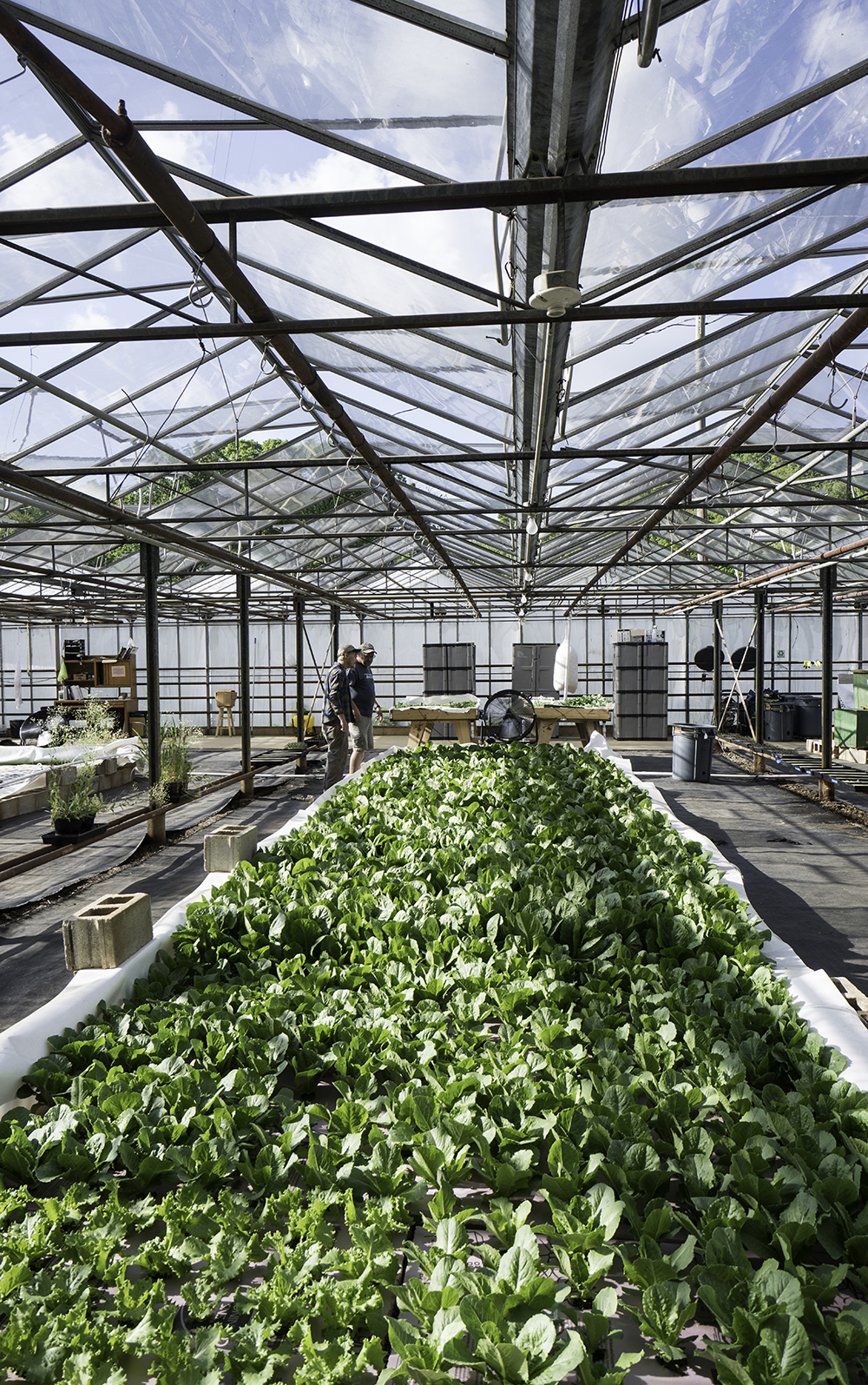Pictured above: Brook Sheffield, of L.O.T.U.S. Urban Farm and Garden Supply (Photo courtesy of L.O.T.U.S.)
By Frances Figart
We are fortunate to live in a region that places great emphasis on improving the sustainability of its farming methods. One method that is gaining ground— and, actually, water—is aquaponics.
“Aquaponics is the marriage of two farming techniques: aquaculture and hydroponics,” says Brook Sheffield, who started L.O.T.U.S. Urban Farm and Garden Supply in West Asheville in January 2014. “Aquaculture is fish farming and hydroponics is growing plants in water.”
Brook houses a free, public access aquaponics “learning lab” in his retail store because he feels it is one way he can address many current world problems. “Aquaponic systems produce healthy, pesticide- and chemical-free food while conserving water without harming the land or sea,” he says. “Aquaponics also provides an excellent teaching model, helping students to better understand biological processes.”

Sunburst Chef and Farmer (Photo by Lurissia Hendrix)
Another aquaponics facility, Sunburst Chef and Farmer, came to West Asheville in November 2015. Charles Hudson and Sally Eason, who met while working together at Waynesville’s Sunburst Trout Farms where Sally is CEO, founded the business the year before. It is located in a greenhouse on the property of Smith Mill Works, which leases indoor growing facilities.
One of the most popular aquaponics methods is a closed system, where the fish and plants simultaneously share the same water in a recirculating system. Charles, former research and development chef for Sunburst Trout, explains that an alternate method to the closed system is called a “decoupled” system, in which the fish and plants do not simultaneously share the same water. In both methods, the fish provide nutrient-rich water for the plants and the plants take up the nutrients.
“We started with a closed system, but transitioned to a decoupled system this past winter,” he says. “Advantages to a decoupled system include being able to optimize conditions (such as pH and water temperature) for both plants and fish without compromising one for the other. This allows us to maximize fish and plant production at the same time.” West Asheville Aquaponic Farming Conserves Resources and Increases Food Security Brook Sheffield, of L.O.T.U.S. Urban Farm and Garden Supply (Photo courtesy of L.O.T.U.S.)
Sunburst Chef and Farmer uses float beds (also known as deep-water culture) for raising leafy greens and herbs. They grow between 1,280 to 2,880 plants in each bed, depending on spacing.

Sunburst Chef and Farmer (Photo by Lurissia Hendrix)
“Our structure is a 13,800-square-foot greenhouse complete with five grow beds, 52 ft. x 8 ft., and a 600-gallon fish tank containing tilapia,” says August Forbes, chief operations officer for Sunburst Chef and Farmer. “In the simplest of terms, the fish waste produced is converted into nutrients that fertilize the plants. By using the nutrients, the plants return clean water to the fish.”
The sustainability benefits of such a system are vast. Farming done in a greenhouse or enclosed warehousestyle space using grow lights allows humans to control some environmental conditions that can wreak havoc for traditional farmers. Aquaponics uses roughly 90 percent less water than traditional soil farming, helping to prevent depletion of one of our most valuable resources.
“All of the water that is put into our system is utilized for fish and plant growth,” says Charles. “Large areas of arable land are not required for aquaponics. Systems can be set up virtually anywhere: urban areas, repurposed buildings, or greenhouses. Since we are in a controlled environment, we are able to produce food year round.”

Sunburst Chef and Farmer (Photo by August Forbes)
L.O.T.U.S. (an acronym for “living only through urban sustainability”) employs an aquaponics system that relies on passive filtration and gravity to do most of the work, a model that was introduced in the 1980s at the University of the Virgin Islands, and is thus called UVI.
“Aquaponic farming is necessary if we want to continue to feed a growing population without damaging our soils and waterways,” says Brook. “Increasing climate change and the need for water conservation make aquaponics a perfect fit for future farming.”
Brook adds that L.O.T.U.S. doesn’t advocate for one style of farming over another when it comes to organic soil production versus aquaponics. “We believe both techniques not only complement each other, but are necessary for our future food security.”
Learn more at sunburstchefandfarmer.com and lotusfarmandgarden.com.



Thanks for sharing the great project! I love the ideal of the combination between keeping fish and planting.